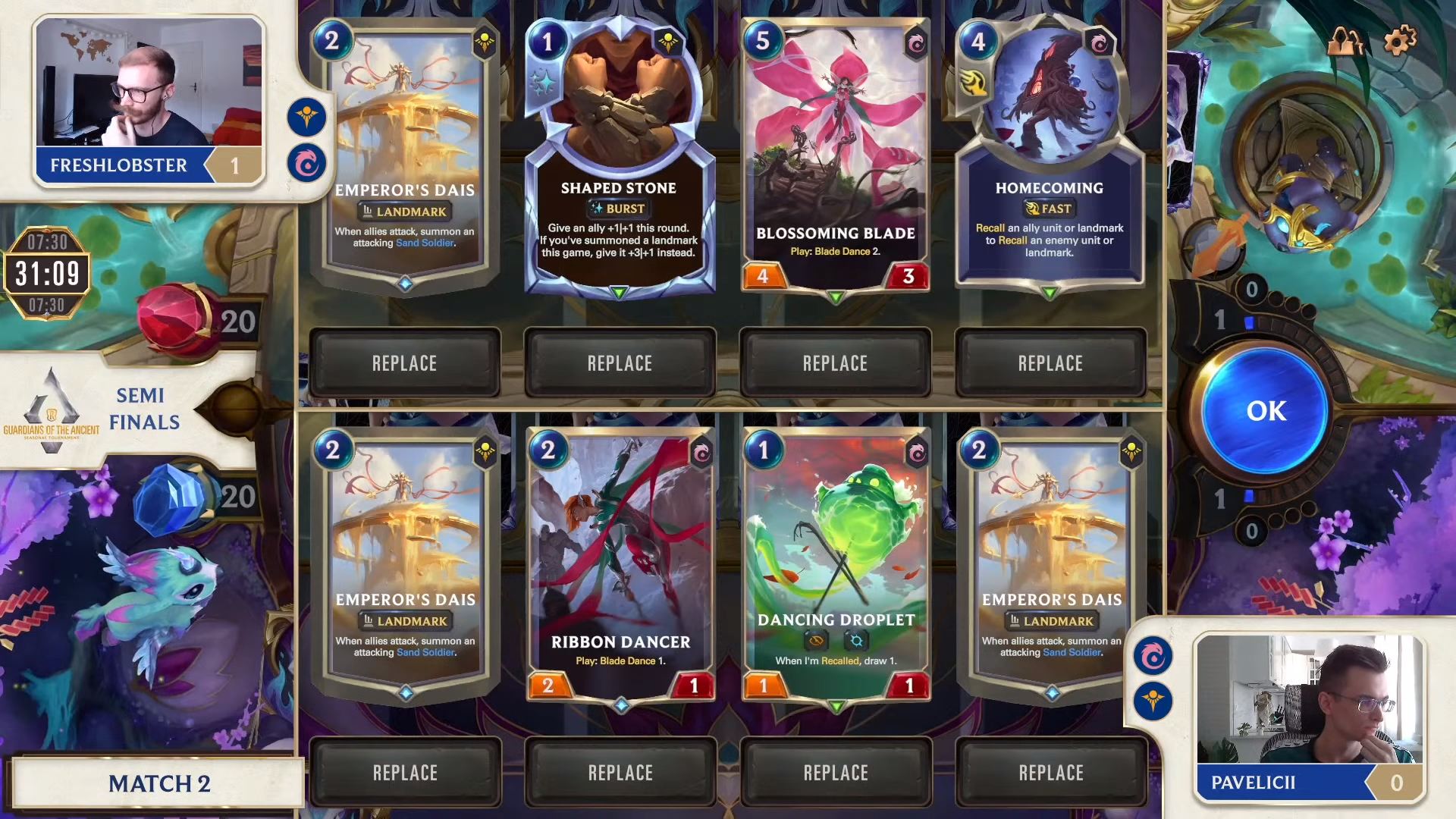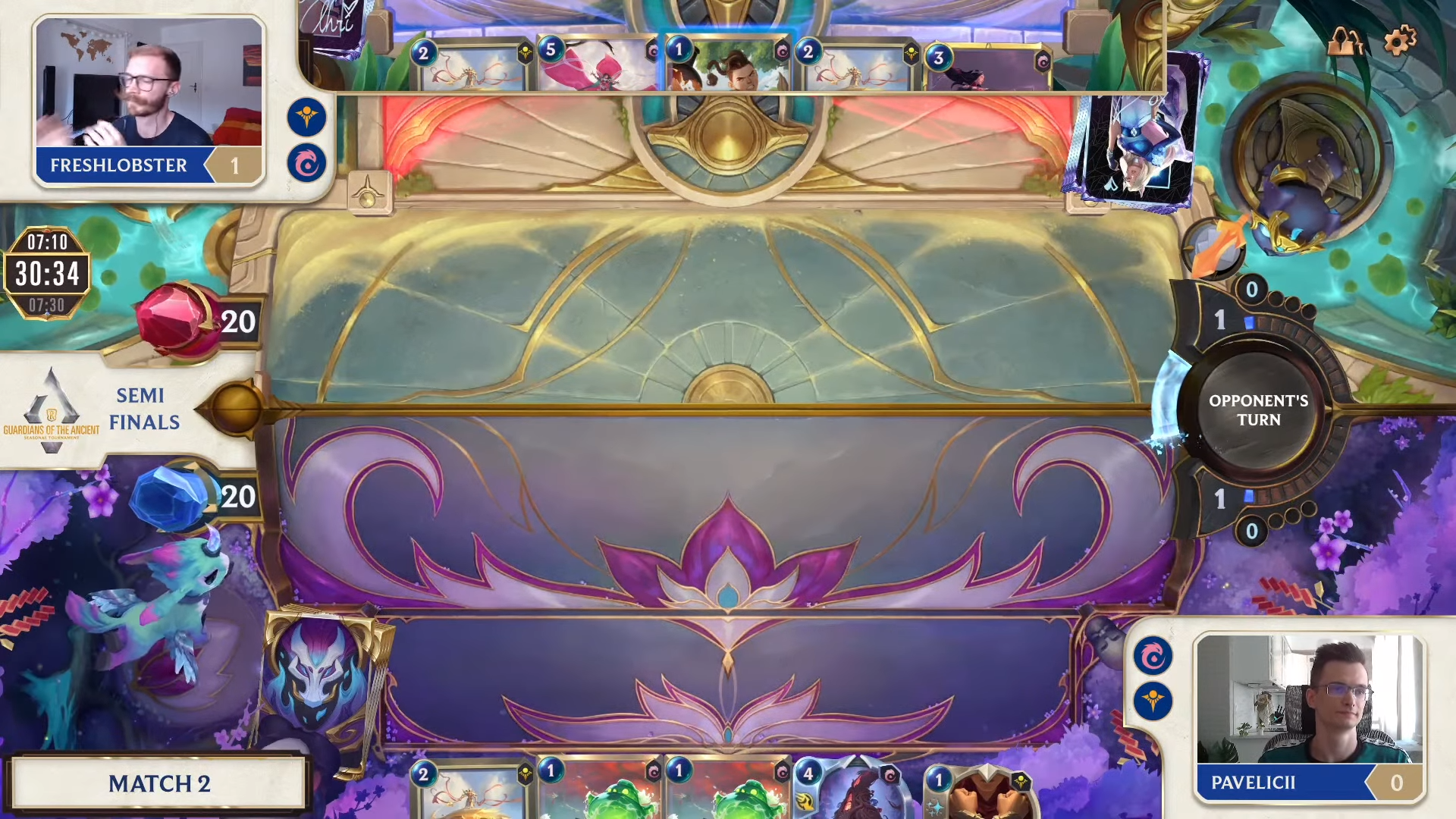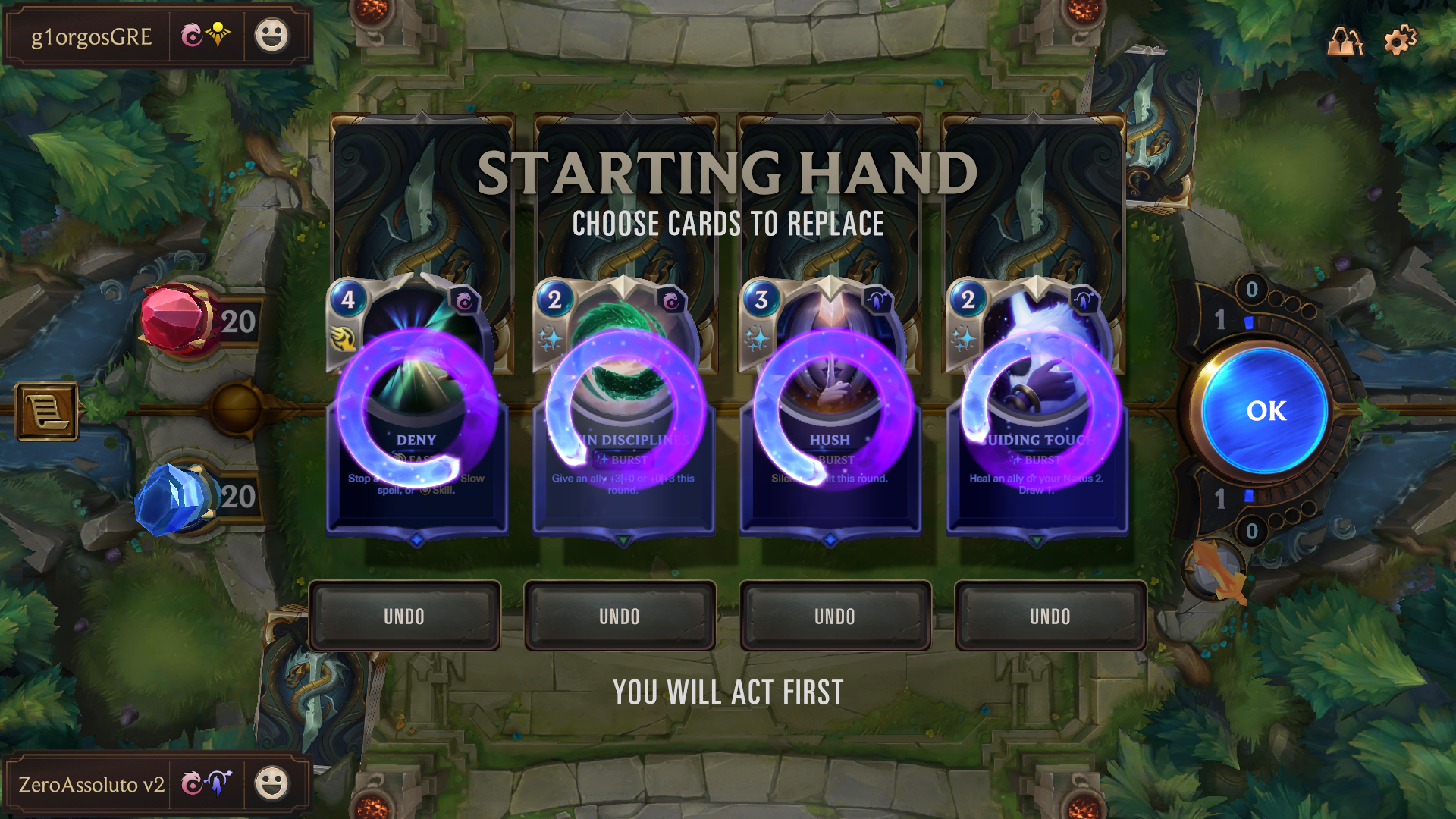Card Games Concepts: Mulligans, the first step towards victory
In this article we will dive into the concept of Mulligan, and how to get better at it to improve the quality of your games.
In this article we will dive into the concept of Mulligan, and how to get better at it to improve the quality of your games.
Last time we talked about the concept of Tempo in card games, focusing on how its management affects Legends of Runeterra and giving some advice to get better at it.
Today we will cover another CG fundamental in the form of the mulligan: the very first game mechanic you can have an influence on at the start of a match, but what is it exactly?
When we say “mulligan”, we mean that mechanic at the start of a game that lets you choose whether to fully keep the 4-cards-hand that you have automatically drawn or to replace any of those cards with the same amount from your deck.
This is one of the most powerful tools that you have inside a game to “tune” your deck’s gameplan to match your opponent’s, look for specific cards pivotal for your plan to work or simply adjust the mana curve of your hand if it is non-optimal or not fit for this specific matchup.
Performing a good mulligan takes a considerable amount of game knowledge, experience, and skill in planning several turns ahead, but no mulligan is usually “perfect” and even the best players don’t always agree on mulligan patterns due to preference in playstyle or different lines of thought.
Let’s start this paragraph saying that you shouldn't play your game just round by round, one of the skills that allow our best players to have over 60% win rate is that they are able to identify a clear path to win in every game they play playing around both theirs and their opponents’ win conditions planning most of the game from turn 1.
Mulliganing correctly is a crucial part in this process, so let’s examine an example; in the mulligans between an Azir-Irelia mirror matchup from the European Seasonal Tournament Semifinals, we can see probably the extreme case scenario where a mulligan can instantly win or lose a match: mirroring decks.

Courtesy of Riot Games
If any of the players get even the slightest lead from a mulligan (Tempo advantage, better curve, better resources or secure finisher/win condition), it can easily snowball into an easy victory without much agency in the game from the opponent, since they play the same deck.
Given that his starting hand didn’t allow for much early aggression with a deck that wants to swarm your board with constant sand soldiers attacks, FreshLobster decides to replace all his cards except for the Emperor’s Dias, an essential engine for his deck to work properly; Pavelicii instead, having a Dias already secured himself and a good 1-mana drop in the Dancing Droplet, will mulligan away the second Dias and the Ribbon Dancer to look for an early Azir.
As we can see the results of the Mulligans will end up favouring Lobster, but the intent was clearly there for both players. This can only remind us that although the Mulligan is a very powerful tool given to players to adjust their hands, it will inevitably have a chance to make your hand worse than you had before so remember to always be careful and think thoroughly about what and why you want to replace.

Courtesy of Riot Games
When we talked about Tempo, we said that a deck can be built to perfectly fit a mana curve to gain advantage on your opponents with better trades and overwhelming board presence, and we used Demacia (both dragons and elite archetypes) as an example; while that still remains true, today we will try to merge this deck building concept and mulligan.
If for example you are playing an Elite decklist and the opponent is a Karma-Ezreal deck, you are the one who has to close the game before turn 10 because that is the clock that the enemy deck puts on you before One Turn Killing you with all his Karma-enhanced burn.
In this case, having a starting hand full of units with 5 and 6 mana cost is not ideal because you would allow the opponent to stack his defences and leverage his HPs as a resource to get his combo pieces in place.
What you would do in that case is most likely keep one of the 5 mana units (like Screeching Dragon) and mulligan away the others, because your deck is built with an higher number of low cost cards that can be used to disrupt the opponent’s game plan early and chip away at his HPs before he can counter attack, forcing him in losing trades and eventually to a forced loss.
Another very common case of mulligans serving the need of Tempo occurs in aggro and burn decks like Pirate Aggro, where having a three 1 mana unit hand plus a Noxian Fervor can basically win some matchups on the spot due to the pressure derived from them and the forced trades and usage of removals that the opponents will end up doing to respond to them.
As previously stated, mulligans are highly dependent on how your deck is built, because the only cards that you can obtain via it are already present in your deck. Knowing the deck that you are playing is obviously very important in every stage of the game to plan your next moves, but it’s vital to know the chance percentages of finding cards based on how many copies of them are in your deck.
Some archetypes push this concept to the extreme, where some spells/champions/units are so crucial for your gameplan that you need to Hard Mulligan for them. A so-called “Hard” Mulligan happens in fact when you choose to replace all of your cards, whatever those may be, in order to find a specific card that you consider fundamental for you to win.
An example of this strategy can be found analyzing the game pattern of either old Scouts decks and old Zoe-Lee Sin decks. In the former you would search through your deck for an early MF to quickly snowball your game, while in the latter you could find yourself in matchups where a Zoe hard-mulligan was the right play to start your value game and slowly deplete enemy resources.

Courtesy of Riot Games
Today we dove deep into the mechanics and use of mulligans to get an edge over opponents in Legends of Runeterra. Stay tuned for other articles of this series, we have only scratched the surface so far!
As always good luck for your climb and enjoy the Ruination Event!